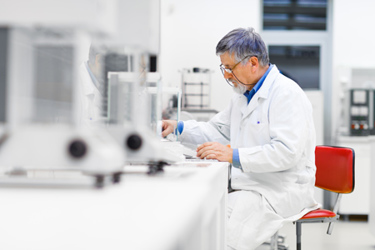AAV Full/Empty Capsid Separation Using Mechanistic Modeling
By Tatjana Trunzer and Patricia Roch, Scientists at Cytiva

Developing a properly optimized AAV polishing step to separate empty from full viral particles normally requires many experiments and analytical evaluations, which are time and cost intensive. Discover a chromatography modeling software that can speed up the process development with inexpensive and fast computer simulations and fewer experiments required.
Mechanistic modeling can support the understanding of fluid dynamical and mass transfer effects inside the chromatographic system as well as the influence of MgCl2 on the AAV particles’ adsorption/desorption properties, which is often used as additive during salt elution to improve the separation performance of full and empty particles. In this study, we used mechanistic modeling to investigate how AAV-resin interactions are affected when MgCl2 is used as an elution additive.
Get unlimited access to:
Enter your credentials below to log in. Not yet a member of Drug Discovery Online? Subscribe today.
